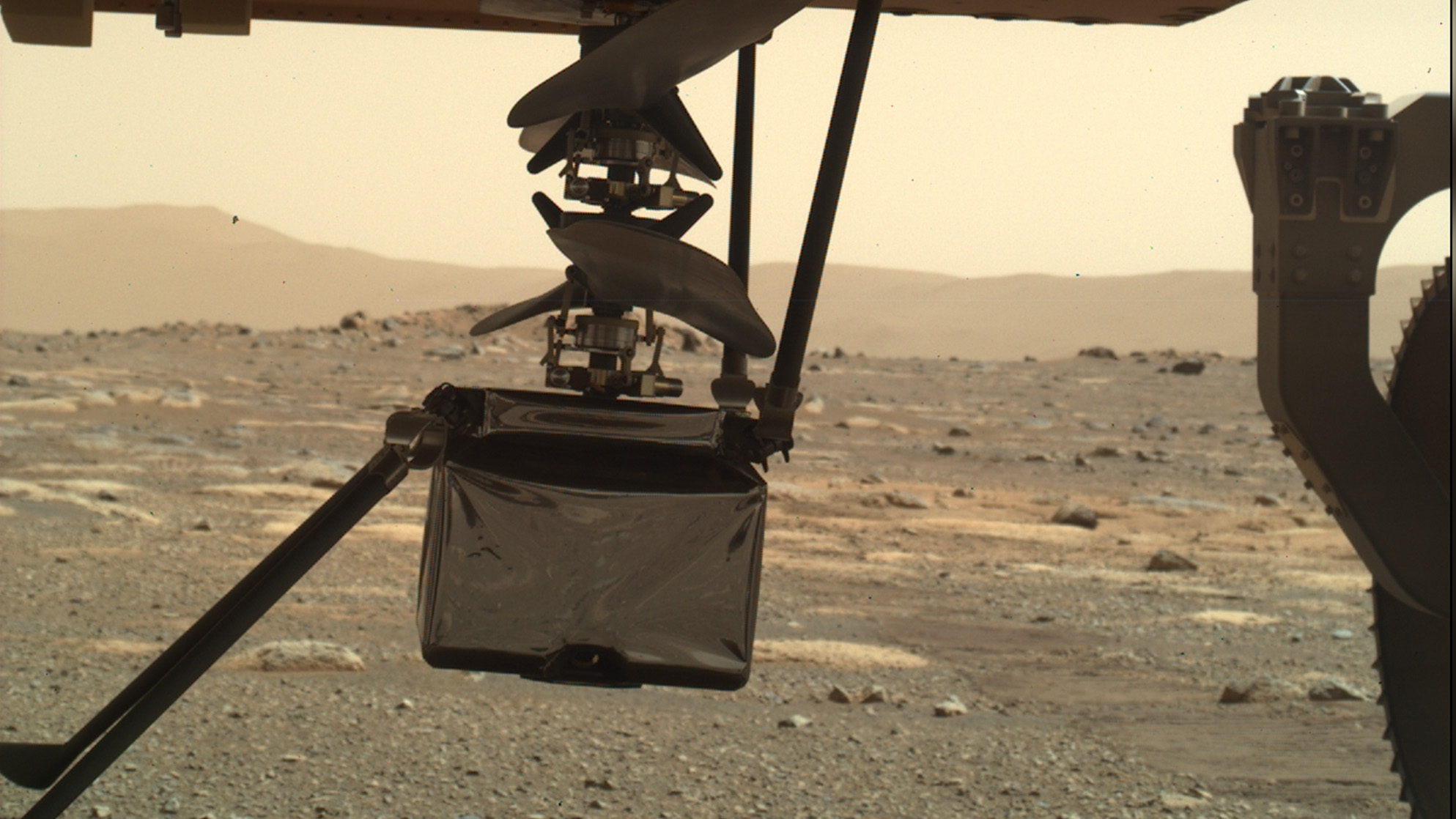NASA's Mars helicopter is slowly unfolding beneath the Perseverance rover
NASA's Perseverance rover is slowly getting ready to deploy the first helicopter on Mars even as it takes a look back at the litter it's dropping on the Red Planet.
The rover, which was carefully sterilized on Earth to avoid contaminating Mars with microbes, dropped a protective debris shield onto the planet's surface on March 21. The shield is no longer needed as it was designed to protect Ingenuity during the "seven minutes of terror" landing in February.
An image from the WATSON (Wide Angle Topographic Sensor for Operations and engineering) camera on the rover's robotic arm shows the debris shield safely on the surface of Jezero Crater, between the rover's six wheels. It's the second thing Perseverance dropped in recent weeks, after an unneeded belly pan relating to its sampling system.
Video: Perseverance rover's latest tracks & Mars 'litter' (with Sol 16 audio)

Join our forums here to discuss the Perseverance rover on Mars. What do you hope finds?
"Away goes the debris shield, and here's our first look at the helicopter," the Perseverance Twitter account tweeted March 21.
In a series of images from Perseverance, the Mars helicopter can be seen slowly unfolding from its initial position on the rover's belly.
"It [the helicopter] is stowed sideways, folded up and locked in place, so there's some reverse origami to do before I can set it down. First though, I'll be off to the designated 'helipad,' a couple days' drive from here," Perseverance team members wrote on Twitter as the rover.
Breaking space news, the latest updates on rocket launches, skywatching events and more!
The Ingenuity helicopter is expected to attempt its first flight as soon as April 8, according to NASA, and it will be the first time an aircraft will attempt to fly through another world's atmosphere. "A couple more drives should get me there," the tweet added.
The rover is on a larger quest to seek signs of habitability in Jezero Crater, which appears to have been rich in water earlier in its history. Perseverance will cache the most promising samples it finds for a future sample-return mission to ferry back to Earth. As for Ingenuity, if it can fly it will hail a potential new generation of Martian explorers that can scout ahead of rovers and even humans, in the decades to come, to make surface exploration easier.
NASA plans to start the Ingenuity flight campaign no earlier than April 8, assuming that Perseverance will be able to deploy the helicopter safely on the surface — a complicated six-sol or Martian day process. (A sol is roughly 24 hours, 40 minutes of Earth time.) Perseverance and Ingenuity are also working mostly on their own, as radio communications must send preprogrammed instructions to Mars, which is several minutes' light speed away from us.
Perseverance teams are working on Mars time for a few months to make the most of the mission start, and hope to get Ingenuity off the ground within 30 sols or 31 Earth days of the drone's deployment.
Follow Elizabeth Howell on Twitter @howellspace. Follow us on Twitter @Spacedotcom and on Facebook.
Join our Space Forums to keep talking space on the latest missions, night sky and more! And if you have a news tip, correction or comment, let us know at: community@space.com.

Elizabeth Howell (she/her), Ph.D., was a staff writer in the spaceflight channel between 2022 and 2024 specializing in Canadian space news. She was contributing writer for Space.com for 10 years from 2012 to 2024. Elizabeth's reporting includes multiple exclusives with the White House, leading world coverage about a lost-and-found space tomato on the International Space Station, witnessing five human spaceflight launches on two continents, flying parabolic, working inside a spacesuit, and participating in a simulated Mars mission. Her latest book, "Why Am I Taller?" (ECW Press, 2022) is co-written with astronaut Dave Williams.
